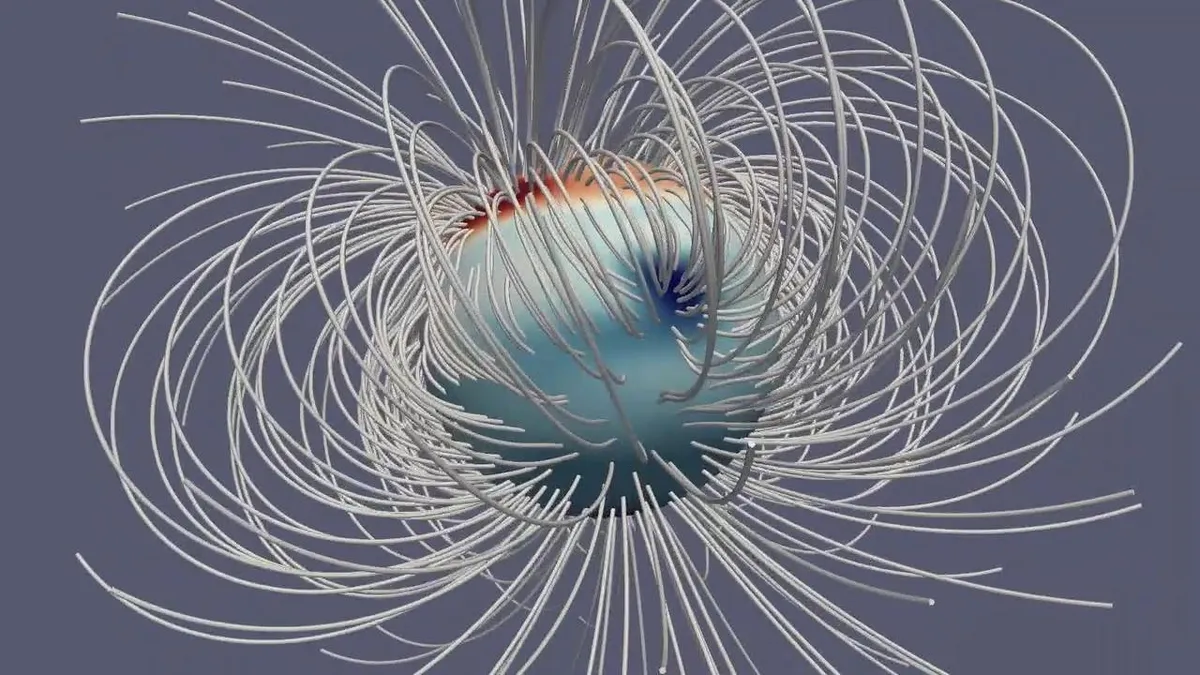During the very early ages of our Solar System, the gas giant planet Jupiter was twice the size it is today, according to a study that looked at two of the planet's closest moons.
What's more, at that time Jupiter's magnetic field was 50 times stronger than it currently is.
More on Jupiter

The discovery has implications for our understanding of how the Solar System has evolved since the birth of our Sun 4.6 billion years ago.
That's because Jupiter, by far the largest Solar System planet even today, played a major role in shaping the orbital paths of the other planets, while also sculpting the disk of gas from which they formed.

The early days of our Solar System
The story of our Solar System begins 4.6 billion years ago, with the birth of the star we now know as the Sun.
Following its formation, the young Sun was surrounded by a disc of gas and dust: the leftover materials out of which it had formed.
Over time, small clumps of this material grew as a result of gravity pushing and gathering grains together.
These clumps accreted more and more material over time, eventually forming planets in orbit around the Sun.
But our young Solar System likely didn't look anything like it does today.

The Grand Tack hypothesis, for example, predicts that Jupiter formed about 3.5 astronomical units (AU) from the Sun, then migrated inwards to 1.5AU, before migrating outwards to the 5.2AU distance it orbits at today.
Inevitably, the act of such a huge gas giant planet migrating inwards and outwards would have had a huge effect on the orbits of the other planets, Jupiter's gravity pulling and pushing them as it did so.
So understanding Jupiter's early evolution can help planetary scientists learn more about how our Solar System developed over time.
Turning the clocks back on Jupiter's size
In a study published in the journal Nature Astronomy, Konstantin Batygin, professor of planetary science at Caltech, and Fred C. Adams, professor of physics and astronomy at the University of Michigan, looked at Jupiter's primordial state.
They found that about 3.8 million years after the Solar System's first solids formed, Jupiter was much larger and had more powerful magnetic field.
"Our ultimate goal is to understand where we come from, and pinning down the early phases of planet formation is essential to solving the puzzle," Batygin says.
"This brings us closer to understanding how not only Jupiter but the entire Solar System took shape."

They looked at Jupiter's small moons Amalthea and Thebe, which orbit closer to Jupiter even than Io, the smallest and nearest of its four large Galilean moons.
Amalthea and Thebe have slightly tilted orbits, and by studying these irregular orbits, the astronomers were able to calculate Jupiter's original size.
They worked out that young Jupiter was about twice its current size, and could have fit over 8,000 Earths inside it.
What's more, Jupiter's magnetic field at that time was 50 times stronger than it is today.
"It's astonishing that even after 4.5 billion years, enough clues remain to let us reconstruct Jupiter's physical state at the dawn of its existence," says Adams.

A clearer view of Jupiter's history?
The study team say that, because the new insights into early Jupiter's enormous size and magnetic field were gleaned by observing the orbits of two of its small moons, they were able to bypass the need to use properties of Jupiter that aren't directly measurable.
These include uncertainties such as gas opacity, accretion rate and the mass of the heavy element core.
Instead, the orbital dynamics of the two moons are directly measurable which, they say, gives them much higher certainty that their calculations are correct.
And, the study says, "the results add crucial details to existing planet formation theories, which suggest that Jupiter and other giant planets around other stars formed via core accretion, a process by which a rocky and icy core rapidly gathers gas."
By studying two of Jupiter's smallest moons, the team have pinned down more exact measurements about Jupiter's size, spin rate and magnetic field during an early, pivotal moment in the history of our Solar System.
Read the full paper at www.nature.com/articles/s41550-025-02512-y

